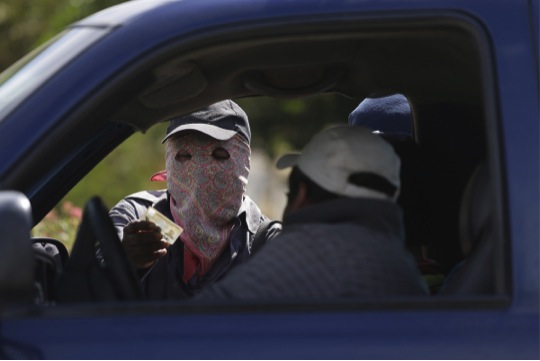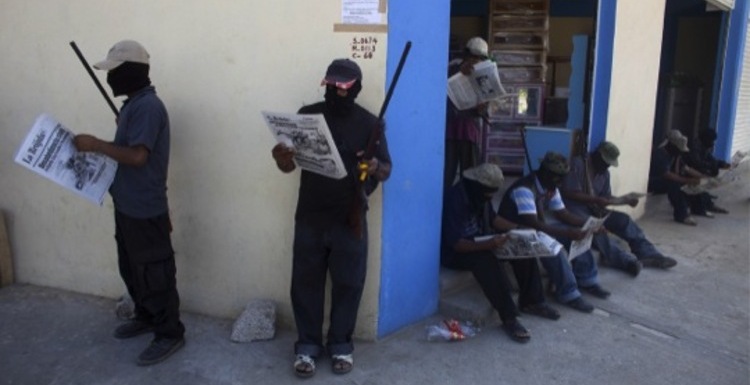Guardians or Criminals? The Rise of Self Defense Groups in Mexico
Citizens in the Mexican state of Michoacán recently have banded together to protect their communities from extortion and drug-related violence. Known as self-defense groups (SDGs), these armed civilian groups now operate in 13 Mexican states and have a presence in more than 60 municipalities. Perceptions regarding these groups vary, as Javier Sicilia, the leader of the Movimiento por la Paz con Justicia y Dignidad (the Movement for Peace with Justice and Dignity), noted, “Either they have been publicly welcomed, and are seen as legitimate responses to the State’s failure to ensure security, or they are being seen as a potential security threat by attracting other armed groups to the country,” Sicilia said. [1] Proponents of SDGs see them as an inevitable response to crime and corruption; however, critics point out that several of these armed groups are motivated by self interest and do not operate within the legal boundaries of the Mexican Constitution.
Michoacán
Known for rising heroin production and drug trafficking routes, the central Mexican state of Michoacán has seen a massive amount of violence dating back to President Felipe Calderón’s (2006-2012) offensive in the war on illegal drugs. While statistics show that homicides have decreased 14 percent from last year in Mexico as a whole, the war rages on in Michoacán. Ironically, fourteen people were killed in Michoacán on the same day that the Mexican government presented its official homicide figures. [2]
The recent proliferation of SDGs in Mexico results from the government’s inability to protect its citizens. Residents like those in the tiny rural communities of Guerrero and Ayutla believe that the government is unable to protect its citizens from the drug cartels because law enforcement and military officials are corrupt. Drug cartels routinely bribe local officials into carrying out their agenda of extortion, kidnapping, and narcotic trafficking. Doña Juana, a resident of Ayutla, hit a common theme, pointing out that “the regular police and the military are all being used by organized criminal groups to carry out their activities. They’re not stopping crime.” [3] Local residents believe they have no alternative but to organize SDGs. In January, reports began to circulate in Michoacán that over 20 communities had established community systems of security and justice, with thousands of armed citizens volunteering. “Now we have our own community police, everything is much quieter. In the last couple of months organized crime has begun to disappear,” Doña Juana added. [4] Now some officials are opting to legalize SDGs.

However, while SDGs are perceived in local communities as enhancing justice and public safety, often they too are corrupted by power and greed, and too often have quickly aligned with criminal organizations. In fact, a number of government officials and security experts have warned about the violent repercussions that unaccountable SDGs, which represent a form of “mobocracy,” will have on Mexico.
Acting beyond any legal authority, SDGs have set up random check points, imposed punishments, detained local authorities, tortured suspected criminals, and traded gunfire with the federal police. On March 26, an estimated 1,200 armed members of the Costa Chica SDG took control of the municipality of Juan R. Escudero. [5] In Mexico’s tierra caliente region, members of the Costa Chica SDG have taken on the Los Caballeros Templarios (LCT) cartel. At first, the Costa Chica SDG drove out the cartel, but now the Los Caballeros Templarios are staging a comeback, and violent confrontations are near daily occurrences. [6]
Where Do You Stand?
The Mexican government is faced with a complex security dilemma. Banning these organizations will create a nasty public backlash and leave communities like Ayutla and Guerrero unprotected from violent drug cartels. However, if SDGs keep proliferating in Michoacán, criminal organizations might threaten the stability of the region. The Mexican Constitution is derived from an implicit social contract, which emphasizes that the main function of the state is to provide security for its citizens. Therefore, the government must focus more on tackling corruption within the military and the law enforcement community. By doing so, the Mexican people will feel more confident in allowing government forces to serve as its protectorate, thereby eliminating the need for SDGs.
JT Larrimore, Research Associate at the Council on Hemispheric Affairs
Please accept this article as a free contribution from COHA, but if re-posting, please afford authorial and institutional attribution. Exclusive rights can be negotiated.
For additional news and analysis on Latin America, please go to: LatinNews.com and Rights Action
References
[1] “‘Community Police’ Becomes a Political Issue,” Latinnews.com, April 3, 2013, http://www.latinnews.com/component/k2/item/55601.html?period=April+2013&archive=3&cat_id=791184%3A%E2%80%98community-police%E2%80%99-become-a-political-issue&Itemid=6.
[2] “‘Michoacan Incidents Tarnish New Homicide Figures,” Latinnews.com, April 11, 2013, http://www.latinnews.com/component/k2/item/55700.html?period=April+2013&archive=3&cat_id=791253%3Amichoac%C3%A1n-incidents-tarnish-new-homicide-figures&Itemid=6.
[3] Linda Pressly, “Mexico’s Vigilante Law Enforcers,” BBC News Magazine, April 16, 2013, http://www.bbc.co.uk/news/magazine-22066082.
[4] Ibid.
[5] “Guerrero Self-Defense Groups Seize a Town,” Latinnews.com, March 27, 2013, http://www.latinnews.com/component/k2/item/55526.html?period=March+2013&archive=3&cat_id=791135%3Aguerrero-self-defence-groups-seize-a-town&Itemid=6; “‘Community police;’” Pressly, “Mexico’s Vigilante Law Enforcers.”
[6] “Caballeroos Templarios vs ‘Self Defense Groups,” Latinnews.com¸ May 22, 2013 http://www.latinnews.com/component/k2/item/56245.html?period=May+2013&archive=3&cat_id=791634%3Acaballeros-templarios-vs-%E2%80%98self-defence%E2%80%99-groups&Itemid=6.


